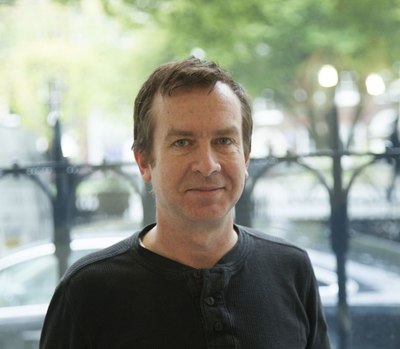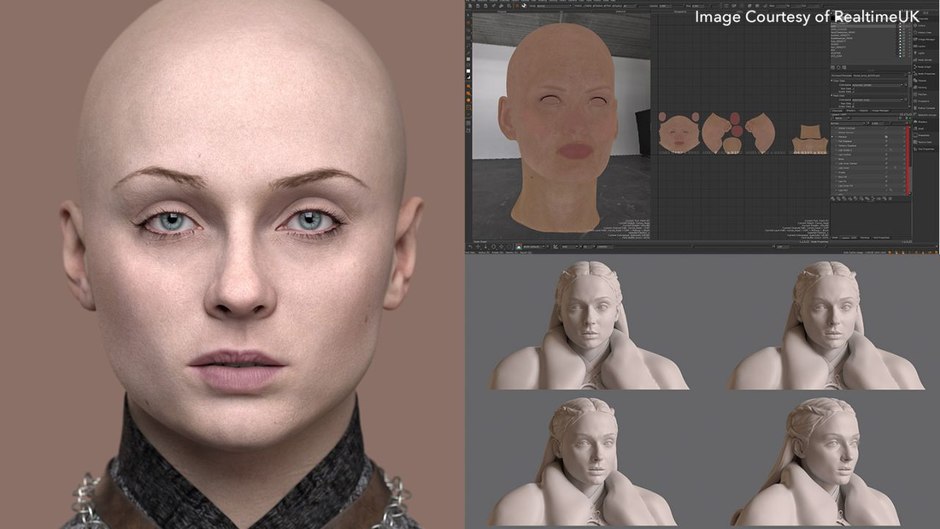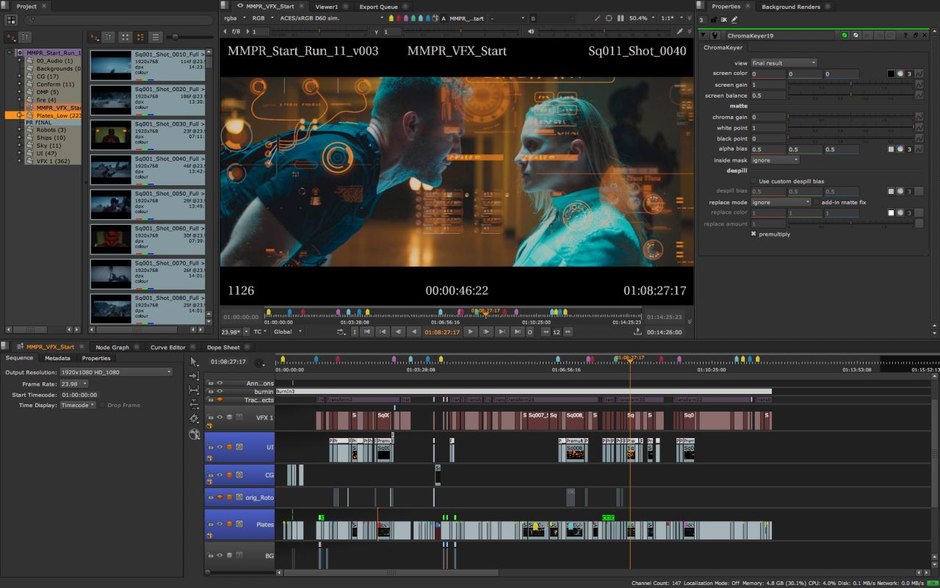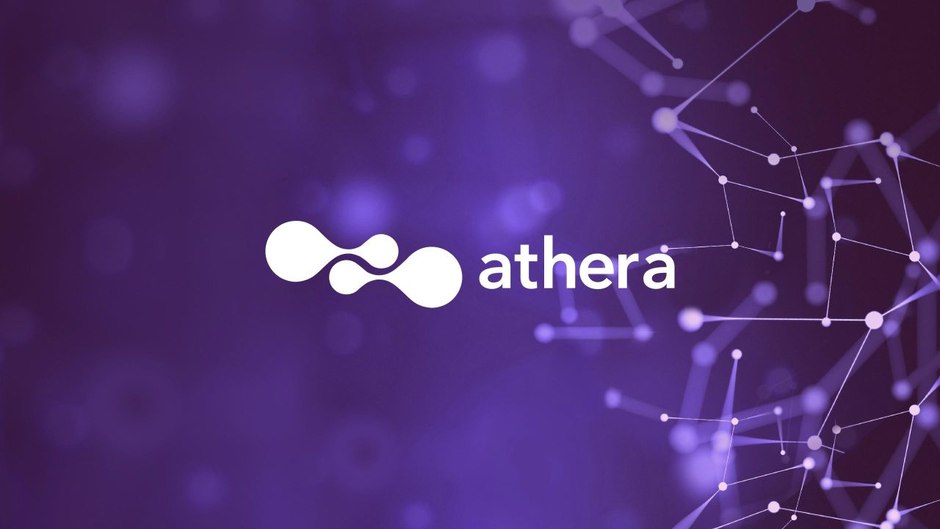It’s Full Steam Ahead for Foundry’s Post-Acquisition Mission
For co-founder and chief scientist Simon Robinson, Roper Technologies’ company purchase better enables the patient, long-term management perspective needed to successfully innovate and support a rapidly changing digital content creation industry.

With the $544 million acquisition by Roper Technologies this past March now complete, leading CG content creation software developer Foundry enters the next phase in its evolution as one of the leading providers of digital tools for the design, media and entertainment industries. With a software product roster that includes leading compositing software tool, Nuke, as well as Athera, a cloud-based end-to-end virtual VFX production pipeline solution, Foundry seems uniquely positioned to continue charting a course of sustained growth, in its customer base, revenue streams and profitability, for the foreseeable future.
The company has weathered, and prospered from, a series of strategic investments that started with the 2007 purchase by Digital Domain for $9.8 million. That stake was bought out by UK-based venture capital firm Advent Venture Partners for $12 million in 2009. The company was sold once again in 2011 to private equity firm The Carlyle Group for a reported $120 million, a 10x return for Advent. In 2015, Carlyle sold Foundry to HG Capital for $312 million; they in turn sold to Roper in a deal just finalized earlier this year. Papers filed as part of each successive transaction document Foundry’s consistent revenue growth over that 10-year period, a period marked by incredible changes within various digital content creation industries the company services.
For co-founder and chief scientist Simon Robinson, the Roper deal means business as usual, but with the added stability a long-term strategic investor, rather than an equity or VC fund, can bring to a management team’s peace of mind. “We’ve had a sequence of major investors over the last 15 years,” Robinson shares. “Each of them has been very helpful at bringing in expertise that expanded our business. You tend to grow a business and at some point, feel you’ve attained a level of maturity where you can say, ‘Well we know everything now.’ I always go through that phase… but then I’m always impressed by new advisors and investors that say, ‘Have you thought about these things?’ And you scratch your head and think, ‘Wow, don’t even know what you’re talking about.’ Then you become wiser again and go through that cycle again. You think, ‘Well, now we do know everything, clearly.’ That process never quite changes.”
Foundry co-founder and chief scientist Simon Robinson.
“HG Capital was fantastic at getting us up to that next level of maturity,” he continues. “The thing about private equity investors is that at some point, they like to sell all their shares to someone new. Ultimately the job falls to us to go out and to find new investors. The exciting thing about Roper is they’re not in the business of needing to redeem their majority shareholding at some later time. So, in five, six or seven years from now, we’re not going to be looking at another cycle of trying to find new investors. That level of permanence puts us in a position to do lots of long term thinking in a way I didn’t appreciate before. It’s quite liberating for us as a management team. The company is the same today as it was six months ago. The people running it are the same… the decisions we have to make are the same… the products are the same. But we can employ the patience we hope will help us learn some new stuff along the way.”
In surveying the digital content creation technology industry, Robinson notes that one thing seems certain: uncertainty. “I’d love to be able to say to our customers, ‘In three years, this will happen, and you will have it on your desk.’ But our industry doesn’t quite work that way. Things are always uncertain. So, we divide our effort between short term, ‘got to do it this year’ pieces of work, the regular cadence of maintenance, upgrades, feature and performance improvement, stuff like that, and running projects which are longer term in scope. On a two, three, five-year kind of scale. A lot of those are based on trends where we say, ‘Well, if that will be true in five or ten years, what will we be missing?’ And we speculate early on what some of those technologies might be.”
Which is where digital content production realities and customers’ shifting needs means ongoing market uncertainty. While we all know trend assessment isn’t a perfect science, technology research and development, which necessitates years of carefully planned, costly engineering and a great big crystal ball, is extremely unpredictable. “Future product arrival is never as certain as the yearly product enhancement cycle,” Robinson states. “When you try and predict a future trend, and work towards it, that trend will always move from where you left it. And your development effort in that direction won’t always function the way you want it to either.”
Foundry has seen both success and disappointment in assessing industry production trends and the products customers will demand in the future. For example, a virtual production development effort Robinson hints at proved less than successful, simply because the market for discrete products never quite developed. “An interesting case, regarding the rise in the use of real-time on-set tools, would be that several years ago, we looked at trends in virtual production,” he describes. “We started a project and worked for several years on a virtual production system. It was one of those things where we said, ‘This is so obvious. By the time we finish the project, everyone will want to be working this way. So, let’s do it.’ But, the market itself didn’t quite run at that speed. By the time we had a good, workable prototype system, it was clear that the industry itself was still doing a lot of experimentation in the area. Projects are still done by a number of specialized people who are just very, very good at bringing together teams to collaborate on productions in order to make virtual actually work. They didn’t need a commoditized product. We weren’t in a position where we could push out software in that area and say, ‘I have now made it a commodity item.’”
On the other hand, tool production for stereoscopic 3D is an area Foundry’s future plans were spot on. “We’ve had other areas of development where we’ve been more successful,” Robinson adds. “For example, we were working on 3D stereo post-production tools in Nuke well before the market knew it wanted them. That was one of those happy coincidences where, when the world went wild for doing 3D, we actually were in a ready position to make it happen. So, sometimes those bets pay off and sometimes they don’t. That’s how we think about it. You have to speculate in advance.”
Regardless of the company’s investments, successful or otherwise, on new products, Foundry obviously devotes considerable resources on development and improvement of its flagship product line that includes Nuke, Katana, Modo and Mari, among others. “This is a mature industry that requires stability in the maintenance process in order to keep people running,” Robinson says. “We put a lot of effort into making everything better. If you were in a room with our product team, you would hear them constantly talking about improving speed, quality and functionality, always striving to serve the needs of our customers. That’s at the heart of everything we do, really. Their demand drives our command.”
“There’s still a lot of innovation going on in terms of making a better picture,” Robinson shares. “But there’s also a lot of emphasis now on how to get this work through the system. What are the ways our software interacts with other software? What’s the pipeline it’s built upon? How do the business practices work? How much time do artists actually spend on drudgework, which could be removed from their day in order to increase their productivity? What’s the impact of real-time rendering on the creative process? These things, by themselves, don’t necessarily increase the quality of the pixels on screen, but they provide artists with more time, more iterations, more ability to be involved in the production process to create either the same picture in a shorter time, or a better picture for the budget they’re given.”
 Sansa Stark’s digital character development for HBO’s ‘Game of Thrones,’ done in Mari by digital studio RealtimeUK.
Sansa Stark’s digital character development for HBO’s ‘Game of Thrones,’ done in Mari by digital studio RealtimeUK.
While a considerable amount of technology development and innovation continues to focus on the quality of the “picture,” more and more, companies are focused on the pipeline, how systems are integrated and productions can be run more efficiently, quickly and cost-effectively. Once of the biggest areas of that focus is cloud-based computing.
“It’s the enabling technologies themselves which are now more key,” Robinson continues. “One obvious big one for us, a trend that seems a long way from reaching its peak, is the growing acceptance of cloud resources in the creation of media. You can see the industry as a whole slowly moving that way. And it makes logical business sense from the perspective of an industry that needs dynamic scale and business practices that aren’t built on fixed infrastructure.”
The company is a leader in this emerging market with their cloud-based production hub, Athera. Athera lets you run Foundry apps, along with others such as Houdini, on virtual workstations integrated, as needed, with virtual servers for on-demand, easily scalable up or down production infrastructure. The system provides immediate instancing of needed production pipeline resources without the need for investments in physical, onsite infrastructure, such as workstations, networking gear, renderfarms and storage. Many concerns regarding cloud computing, such as security and peak period scaling, have been addressed through the company’s partnership with Google Cloud, which provides instant access to an extensive (some might say practically infinite) worldwide computing infrastructure. All priced, so to speak, via pay at the pump for resources actually used.
According to Robinson, “Athera is a major effort for us, which is in a sense, very distinct from tools work, which is what we’re traditionally known for. We’re thinking more about the pipeline and how individuals collaborate on a cloud-based platform. Are the requirements different? What are people’s expectations of the availability of these platforms? How do they pay for them? This is a big area for us.”
“It all comes back to the more obvious ideas of cost and efficiency,” Robinson explains. “If I can create an image either in real-time, in seconds or in minutes, rather than overnight, what impact does that have on me in terms of the cost of doing work, and the speed at which I do that work? Frankly, regardless of whether it’s accelerated by cloud or accelerated by GPUs, where an artist has to spend less time, even if it’s seconds, pausing between actions, in order to iterate on a concept, it will make a fundamental difference in the way an artist works and ultimately, the way multiple artists collaborate. It influences how artists think about the creative process. At Foundry, we place a big effort on exploring what the impact of that would be, particularly around real-time rendering of CG assets.”
Shifting back to the issue of industry trends, Robinson notes two specific areas that he’s happy to see. “I’m quite thrilled by the return of on-set digital back projection as a way of providing lighting backgrounds and scene context for actors,” he reveals. “A prime example is the work done on Solo[Solo: A Star Wars Story]. It’s nice to see what were traditionally analog processes that died out in favor of pure greenscreen environments, starting to come back, not only to provide context for actors, but also for the lighting influence of the on-set backdrop. The idea that we can do so with modern digital tools is really compelling.”
“We also find a lot of the promise with machine learning,” he notes. “Right now, there’s an explosion of content creation ideas which are broader than our core industry. The idea of using machine learning as part of the content creation process… what that will mean… is very interesting. We have a big effort around machine learning. It isn’t magic. Ultimately, art is a creative process done by humans. It’s never going to be a push button process. The question for us is, ‘How do we guide our work so that machine learning enables the artist by removing the drudgework, the guesswork, the taxing effort from the creative process in order to liberate an artist to be creative rather than merely an operator of a machine?’ We’re trying to keep our minds set on that goal, rather than believing in the future, someone will come into work, push a button, a picture will pop up and they’ll go, ‘Right. I’m done for the day.’ We live in an industry where ultimately, the person paying for that work will say, ‘I don’t like it. Can you change it?’ And having an answer which is just, ‘Oh, I’m sorry, that’s all the machine has produced today’ won’t cut it.”
Robinson hinted, but shared no details, about upcoming Foundry efforts in this area. “We’re hoping to make some announcements between now and the end of the year, on the stuff we’re working on,” he teased. “We published a paper at SIGGRAPH a few years ago [July 26, 2016] about a project called Roto++, which is the application of machine learning to rotoscoping, a hot area people think about quite a bit. But, we’re not looking at this from the perspective that rotoscoping is where I’ll put all my work into the machine, press a button, and get processed images. Ultimately, rotoscoping is a very human driven process where people aren’t just working arbitrarily. They’re rotoscoping for a particular purpose, with guidance as to what they’re trying to achieve. But, there’s many parts of the process that could be highly accelerated by the kind of things we can now do. When it comes to machine learning stuff, the point is that we try to remove the hype by saying this is a new way of thinking about creational tools, but our focus ultimately is still on accelerating an artist.”

熱門頭條新聞
- ‘Memoir of A Snail’ to Open Anima Festival 2025
- New STALCRAFT: X Game Mode Revealed in New Trailer Showcased at The Game Awards
- Can CD Projekt Recapture the Magic?
- Meridiem announces physical edition of the paw-some Cats on Duty for PlayStation 5
- Chart a Course for Puzzle Adventure in Tile Tales: Pirate!
- Czech Game of the Year
- 2D-Survival Dead of Darkness launches for PC on 23rd January
- OFF is coming to Nintendo Switch and Steam in 2025!


